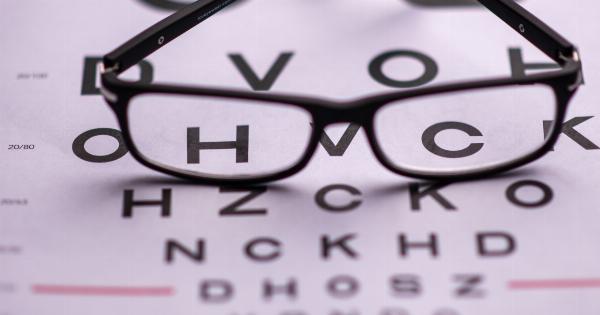Water retention, also known as edema, occurs when excess fluid builds up in the body’s tissues. This condition can cause bloating, swelling, and discomfort.
Water retention can be caused by various factors, including poor diet, hormonal changes, certain medications, and underlying health conditions.
If you suspect that you may be experiencing water retention, it can be helpful to perform a quick and easy test at home to gauge the level of fluid retention in your body.
While this test may not provide a definitive diagnosis, it can give you a general idea of whether water retention is a concern for you. Here’s how to do it:.
1. Press Test
The first test involves pressing on the skin to check for any visible signs of water retention.
Start by pressing firmly on the skin with your thumb for about 5 seconds, specifically targeting areas that are more prone to retaining water, such as the ankles, calves, and lower abdomen.
If you notice an indentation or a “pit” forming on the skin that takes a few seconds to disappear after releasing pressure, it may indicate the presence of water retention.
This is known as pitting edema and can be a sign of an underlying health issue that requires medical attention.
2. Foot and Ankle Swelling
Another way to test for water retention is to check for swelling in the feet and ankles. Remove your shoes and socks and observe if there is any visible swelling in these areas.
Press gently on the skin around the ankles and if there is an indentation, it could suggest water retention.
However, it’s important to note that mild swelling in the feet and ankles can be relatively common, especially after long periods of standing or sitting.
In such cases, natural remedies like elevating the legs or doing foot exercises can help relieve the swelling.
3. Evaluate the Time of Day
Water retention can fluctuate throughout the day, with symptoms often being more prominent in the morning compared to the evening.
This is due to gravity causing fluid to accumulate in the lower extremities while you are lying down or sitting for an extended period.
If you notice that your ankles or hands are more swollen in the morning and the swelling reduces as the day progresses, it may indicate water retention.
However, if your swelling remains constant throughout the day or worsens as the day goes on, it could be a sign of a more serious issue that requires medical attention.
4. Check for Weight Fluctuations
One of the primary signs of water retention is an unexplained increase in body weight within a short period. If you notice a sudden weight gain of more than 2-3 pounds in a day or two, it could be an indication of water retention.
Keep in mind that this weight gain is typically due to excess fluid retention rather than actual fat accumulation. Monitoring your weight regularly can help you identify any abnormal changes and consult with a healthcare professional if necessary.
5. Monitor Changes in Urination
Changes in urinary patterns can also provide insights into water retention. For instance, if you notice reduced urine output or darker urine, it may indicate that your body is retaining more fluid.
On the other hand, increased urine output and frequent urination can suggest that your body is eliminating excess fluid efficiently.
It’s important to note that various factors, including medications, diet, and hydration levels, can influence urinary patterns. Therefore, it’s essential to consider these factors when interpreting changes in urination.
6. Assess for Symptoms of Water Retention
Aside from physical tests, being aware of common symptoms associated with water retention can help identify if you are experiencing this condition. Some typical symptoms include:.
- Swollen and bloated appearance
- Puffiness in the extremities
- Stiff or achy joints
- Tight or shiny skin
- Increase in blood pressure
- Difficulty moving or reduced mobility
If you are experiencing one or more of these symptoms in addition to other signs of water retention, it is advisable to seek medical advice for proper diagnosis and appropriate treatment.
7. Keep a Fluid and Food Diary
Maintaining a diary to record your daily fluid and food intake can help identify any patterns related to water retention.
By tracking the types and amounts of fluids and foods you consume, as well as any associated symptoms, you might be able to pinpoint triggers that worsen water retention.
Some common triggers include excessive salt intake, consuming processed and high-sodium foods, hormonal fluctuations, certain medications, and underlying health conditions like kidney or heart problems.
Once identified, you can make necessary adjustments to your diet and lifestyle to help manage water retention more effectively.
8. Consult a Healthcare Professional
If you consistently experience signs and symptoms of water retention or notice sudden and severe changes in your body, it is crucial to consult a healthcare professional.
They will perform a thorough evaluation, considering your medical history and conducting appropriate tests to identify the underlying cause of water retention.
Remember, self-diagnosis is never a substitute for professional medical advice. A healthcare professional can provide you with accurate diagnosis, customized treatment plans, and guidance on managing water retention appropriately.
By performing these quick and easy tests and consulting with a healthcare professional, you can gain a better understanding of whether water retention is a concern for you.
Early detection and appropriate management can help alleviate discomfort and prevent further complications associated with water retention.





























